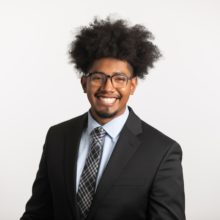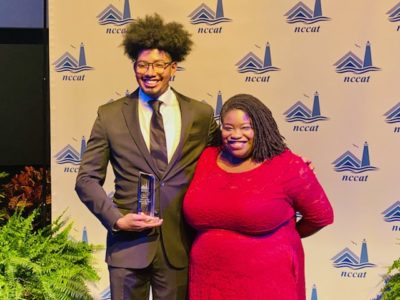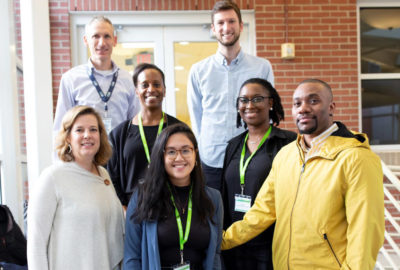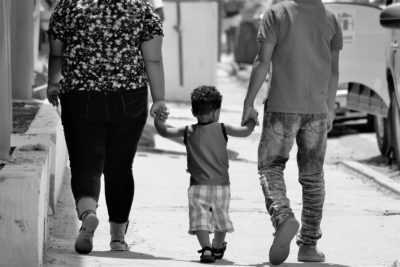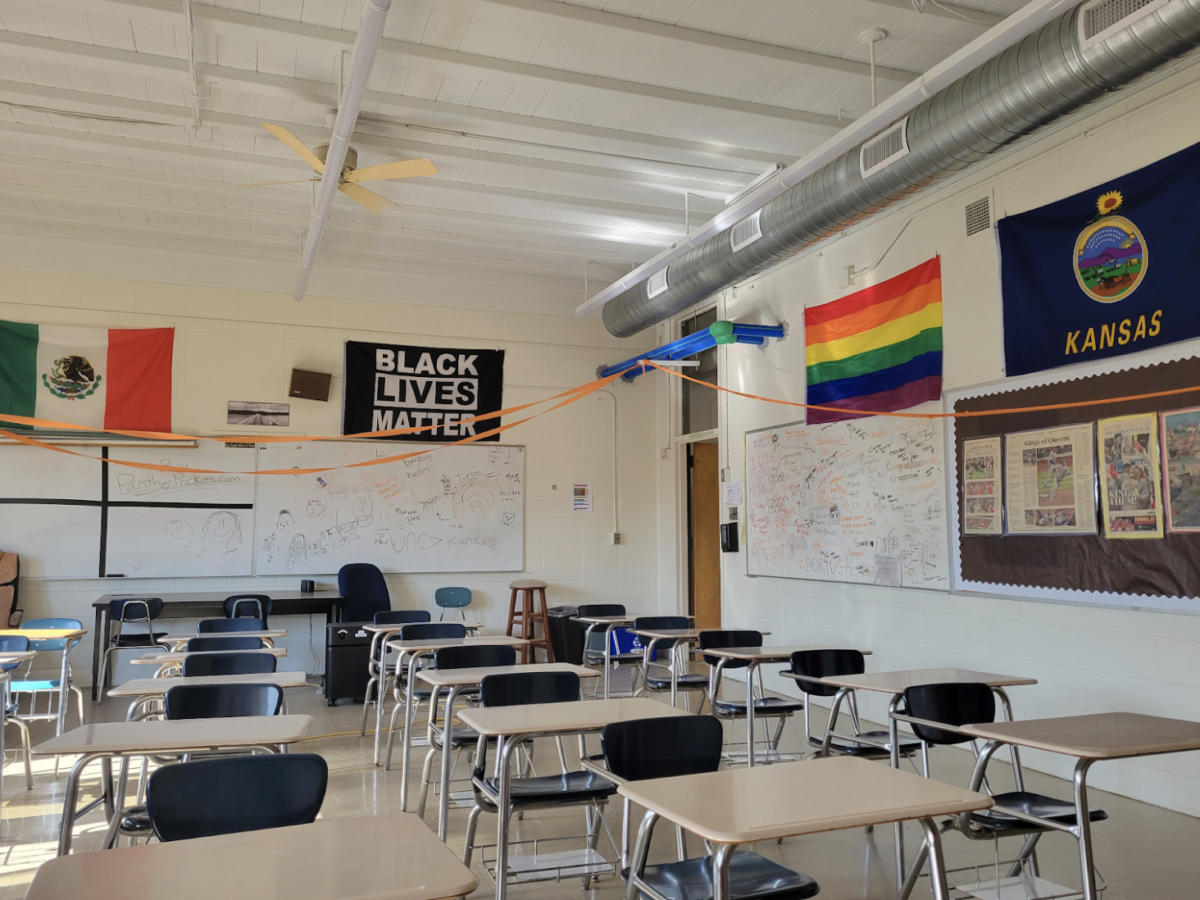

Share this story
Buffalo and me
As a Black person, I am always deeply disturbed when I begin to reflect on the racist violence enacted upon Black people. In these moments, I always see my face amongst the Black victims.
Yet, when I examine the mass shooting that took place in Buffalo, New York, from my perspective as a Black educator, my focus shifts: the 18-year-old alleged gunman was young enough to be in one of my classrooms.
How is it possible that a student could leave any school system in a condition in which they have not developed their abilities to empathize and care for the people around them? What are the ways in which our practices of building classroom communities, curating curriculum, and fostering critical thinking skills have failed us?
Determining the answer to these questions is vital because our school systems failed this young man and, more drastically, failed to protect the victims of his violence.
Author’s Note: Throughout this article, I will be reflecting on the racist violence that took place in Buffalo, New York, on May 14. By focusing on this particular event, I am not saying that teachers do not need to reflect on and address the rampant amount of gun violence that has happened since the events in Buffalo. In fact, as an educator, I believe that our country’s lawmakers have failed to adequately ensure the safety of our students by not systematically changing the way in which people can access guns in our society — as the events in Uvalde, Texas, tragically remind us. Yet, as a Black person, I am keenly aware of the fact that passing necessary gun legislation would not do enough to protect all students because of the fact that police brutality disproportionately impacts Black Americans. In other words, getting guns out of the hands of civilians will be insufficient if members in our communities including some teachers, firefighters, and police officers continue to uphold an ideology of white supremacy that leads to the academic, psychological, and actual death of our Black students and students of color more broadly. Although we tend to think of people holding extremist beliefs as the outliers in our society, the White House has confirmed that white supremacists represent the greatest domestic threat to the United States. Therefore, because the students in our classrooms are the next generation of civil servants, it is important that we as teachers play our role in addressing this issue.
CRT and white supremacy
Given the hostile and violent political climate that some educators are working in, we should not be surprised by the report that the manifesto written by the perpetrator in the Buffalo mass shooting was full of white supremacist rhetoric with a distorted understanding of Critical Race Theory (CRT). Properly understood, CRT is a legal theory that is used to understand and fix legal systems and policies that have intended and unintended effects of racism — consider the 1944 G.I. bill as an example. However, after the 2020 “Summer of Racial Reckoning,” when conversations about atoning for our country’s racist history became a public conversation, some politicians, school board members, parents, and teachers intentionally misrepresented the idea of CRT to say that honest conversations about society, history, and racism lead to white community members experiencing reverse discrimination.
Ideologically, the Buffalo shooter clarifies and rearticulates his fear of CRT in his manifesto when he mentions the anti-Semitic and xenophobic “great replacement” theory, which claims that people of color are working quickly to erase the white population globally. For anyone that would consider the times of ignoring conversations about inequities and identity the good old days, greater attention to the oppression and joys of people of color and queer folks would certainly seem like a sort of erasure for people not interested in sharing space with these communities. The violence that ensued from this white supremacist manifesto should not come as a shock to us, nor should it be considered an outlier.
Throughout the last school year, school board members and educators who have fought for equity across the country have been doxed relentlessly and violently — to the point where U.S. Attorney General Garland has had to intervene.
The day after I was named North Carolina’s Beginning Teacher of the Year, people attempted to generate fear about me winning this award by posting on Twitter that I teach Critical Race Theory. In their tweets, these individuals also posted documents with my house address. The dog whistles were deafening: this information was shared with a targeted audience that could have resulted in violence to me.
Recalibrating our anti-racist sensibilities
In our work with students, we have the ability to either encourage or prevent events like the one that took place in Buffalo.
To some educators, this claim may seem like an exaggeration. But it is not.
As teachers we are already accustomed to believing the routines we put in place for our students can lead to better habits; many of us can recall a moment at the end of the semester in which students either endearingly or mockingly repeat a phrase that we say frequently in our classrooms. Habits of acceptance, inclusion, and anti-racism work in the same way.
When it comes to discussions of white supremacy, we tend to latch on to the most extreme examples. For instance, the majority of people can, hopefully, recognize that the mock slave auction that recently took place in Chatham County was racist. However, the issue is that, for the majority of us, our conversations about equity and anti-racism start and stop with moments of abject horror, which leaves little room for addressing the normalized acts of racism that take place in our daily lives.
“Our conversations about equity and anti-racism start and stop with moments of abject horror, which leaves little room for addressing the normalized acts of racism that take place in our daily lives.”
Often, in our well-intended and open-minded spaces, we like to point the finger at the other side to say that it is the “those people” that are hindering our progress to a better society. Yet Dr. King’s idea of the “white moderate” reminds us that it is perhaps the classrooms that already have some sensibility of anti-racism embedded in their practices that might be the biggest obstacle to change because we allow ourselves to rest on our laurels. These classrooms have a veneer of anti-racism: they have a meaningful Black History Month curriculum that asks students to consider the stories of Black people.
But addressing anti-Blackness is not simply done through offering new information and new perspectives to students. It also means patiently, diligently, and intentionally working with students to reflect on areas that need growth and change. In other words, a student could learn about the horrors of slavery, yet they still might be willing to sell their classmate in a “historical simulation.”
Anti-racist teaching
Part of the real work is done in the day-to-day process of holding difficult conversations with students when their language and actions toward another student fails to cherish their identity and humanity. It is one thing to teach about queer Black people like Marsha P. Johnson and Pauli Murray, but are we cultivating the hearts and minds of students in a way that they would actually welcome and celebrate these people in their classroom?
If proximity to new ideas and people was the only solution necessary for creating a more just society, we would already be reaping the benefits of integration, which is why Dr. Dudley Flood has reminded us that integration “wasn’t designed to be a cure; it was designed to be a possibility. It was the opening of a door.” Unfortunately, for us, this means that the hill that we are climbing is steeper than we realized.
So here we are. And here I am, still reckoning with the fact that although I have deeply cared for all of my students, a white student that sat in my classroom for an entire semester felt that it was ok to say the N-word on social media and wondering how white students in my classes have or continue to call Black students white-washed and ghetto even after I have dedicated entire class periods to addressing the racist roots of these statements.
One of the obstacles that teachers of color and allies face is the reality that these conversations are typically held in a limited number of classrooms. Therefore, these teachers are often swimming upstream against a number of colleagues that would roll their eyes, shake their heads, or claim that any conversation that focuses on a particular student demographic is being blown out of proportion or is weakening any “traditional” sense of rigor for the sake of allowing greater number of “unqualified” students into higher level classes when in reality the traditional sense of rigor was distorted in the first place.
In light of what happened in Buffalo and the primary elections that recently took place in North Carolina, being committed to the ideas of equity and anti-racism will be significantly important. For teachers who work in a district that recently elected school members that oppose the idea of equity, it will be easy to abdicate responsibility of creating a better society because of the powers that be. Similarly, for people that work in areas that claim to champion inclusion and diversity, it will be important to remember that the work of equity is an active process that cannot simply be accomplished through good policies. Equity also requires daily practices of justice.
“Equity also requires daily practices of justice.”
It is up to each and every teacher to impact the lives of every student in their classroom regardless of who is in your PLC, who your principal is, who your superintendent is, and who is on your board of education. You have the responsibility and ability within your classroom to equip kids to make society a better place. That does not mean that policymakers are off the hook, but, ultimately, we as teachers are uniquely positioned in school systems to impact students’ lives.
